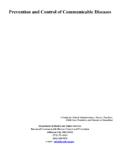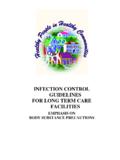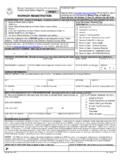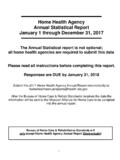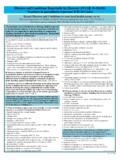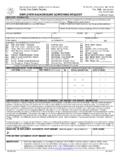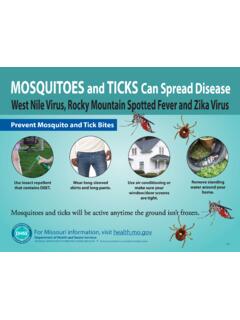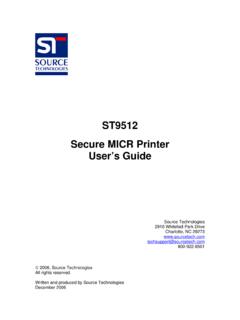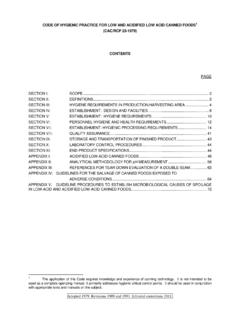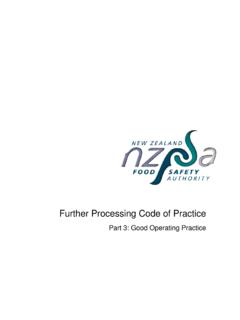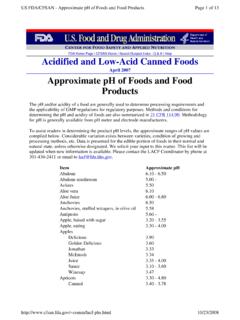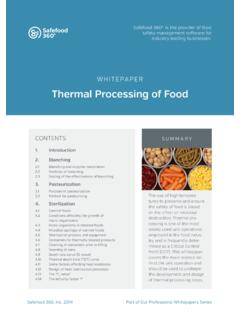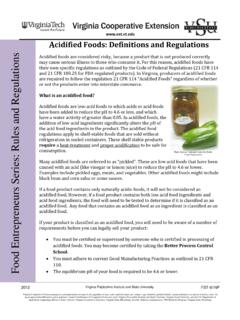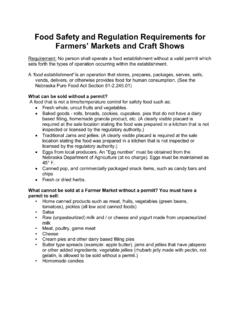Transcription of PRESERVING FOODS CONT. ACIDIFIED FOOD REGULATIONS ...
1 Salsa and OtherAcidifi ed FoodsMissouri Department of Health and Senior ServicesBureau of Environmental Health Box 570 Jefferson City, MO EQUAL OPPORTUNITY/AFFIRMATIVE ACTION EMPLOYERS ervices provided on a nondiscriminatory Department of Health and Senior ServicesPRESERVING FOODS CONT. Acidifi ed FOODS are FOODS such as salsas, pickles, relishes or hot sauces. Usually, acidic FOODS like vinegar, citric acid or commercially canned tomatoes are added to the product to create an acidic environment that limits bacterial activity. Acidifi ed FOODS do not require canning in a pressure cooker or retort. A process that uses acids to penetrate chunky FOODS , like fresh tomatoes, peppers and onions that are not naturally acidic, will need to be reviewed by a process authority to determine if the food is being properly acidifi ed.
2 Low- acid canned FOODS such as vegetables must be retorted under heat and pressure to destroy the bacteria present. Th ese FOODS do not depend on the pH of the food to protect consumers from food REGULATIONSTh ere are federal REGULATIONS enforced by the food and Drug Administration and the state health department that cover acidifi ed FOODS . Th ese REGULATIONS can be found in 21 CFR and 114. It is very important that any manufacturer of these types of FOODS understands these REGULATIONS . One of the keys to producing a safe food is having a consistent process that has been proven to work. Once the process is developed, the manufacturer has to produce the item the same way each time. Variations in the process make it possible for mistakes that produce an unsafe ere are some FOODS that are exempt from these REGULATIONS .
3 FOODS that are specifi cally exempt from the acidifi ed FOODS REGULATIONS include: Alcoholic beverages Carbonated beverages Fermented FOODS such as sauerkraut FOODS with water activity (aw) of or below FOODS stored, distributed and retailed under refrigerated conditions Jams, jellies or preserves covered by 21 CFR 150 ADDITIONAL RESOURCESMeat and Poultry ProductsUnited States Department of Agriculture, 785-841-5600, orMissouri Department of Agriculture,573-751-4762, or Other Dairy ProcessesMissouri State Milk Board, 573-751-3830, ProductsMissouri Department of Agriculture,573-751-4762, ed FoodsMissouri Department of Health and Senior Services, Bureau of Environmental Health Services, 573-751-6095, Information on food SafetyFood and Drug Administration (FDA), 1-888-723-3366, Preparation ofSafe Preparation ofContact your local public health agency at.
4 07/12 Acidifi ed FoodsFACILITY REQUIREMENTSTh e Missouri food Code allows some non-potentially hazardous FOODS to be prepared in a home kitchen to be sold directly to the end consumer, at venues like a farmer s markets. Th e food code does not allow acidifi ed FOODS to be made in a home kitchen. Requirements for a regulated kitchen include: smooth, easily cleanable, durable fl oors, walls and ceilings safe and adequate water supply sanitary wastewater disposal sink(s) to wash, rinse and sanitize utensils separate sink dedicated for handwashingTh is kitchen may be in a private home but must be separated from the home kitchen and living for building a regulated kitchen should be discussed with the health department before construction begins.
5 Th is can avoid costly AUTHORITY AND BETTER PROCESS CONTROL SCHOOLSTo be approved as a manufacturer of acidifi ed or low- acid canned food , you must have your process reviewed by a process authority. You also must attend a Better Process Control process authority is defi ned as a person or organization that scientifi cally establishes thermal processes for low- acid canned FOODS or processing requirements for acidifi ed FOODS . Th e process authority must have expert scientifi c knowledge of thermal and/or acidifi cation processing requirements and have adequate experience and facilities for making such Process Control Schools certify supervisors of thermal processing systems, acidifi cation, and container closure evaluation programs for low- acid and acidifi ed canned on approved schools can be found by calling the Missouri Department of Health and Senior Services (DHSS), Bureau of Environmental Health Services these steps have been accomplished, the food processor is required to fi le their process with the FDA.
6 Salsa, Pickles, BBQ Sauce and Other Acidifi ed FoodsPickles, salsa and barbeque sauce are just a few of the common examples of acidifi ed FOODS that may be found at farmer s markets. However, Missouri REGULATIONS prohibit the sale of most home- canned food . Processors of these FOODS must take additional measures to assure they are being produced safely. Th ese FOODS must be produced in an approved facility. Contact your local public health agency or the DHSS Manufactured food Program for details on becoming approved. SAFE PREPARATION FOR RETAIL SALEWhen FOODS are packaged in sealed containers like jars or cans and they are not properly processed, one of the biggest risks is botulism. Th ere are a number of ways to successfully deal with these hazards.
7 One option is to use high heat and pressure to kill any bacteria or their spores that may be present. Th is is the process used to can low- acid FOODS like corn, green beans or other vegetables. Because these heating procedures are complex, these FOODS must be processed in a commercial retort with sophisticated temperature measuring and monitoring common way to eliminate the threat of botulism from sealed FOODS is through the use of acids to lower the pH. Th e pH scale is used to measure the acidity of food products. (pH is measured on a scale of 0 to 14.)Acidifi ed/low acid food manufacturers must: have their process reviewed by a process authority; complete a Better Process Control School; operate in a facility that meets requirements of all applicable REGULATIONS ; and contact the DHSS Manufactured FOODS Program for more detailed information on inspections.
8 PRESERVING FOODSTh e REGULATIONS regarding acidifi cation were established to assure the safety of canned FOODS . Th e amount of acid in a food or the addition of an acid to a food can be used to control the growth of dangerous bacteria such as the one that produces the toxin that causes botulism. From the regulatory point of view, FOODS are categorized as: acid FOODS (pH naturally below Acidifi ed FOODS (fi nal pH of or below by adding acid or acidic ingredients to product) Low acid FOODS (pH above for raw or initial product) acid FOODS are naturally acidic FOODS such as tomato juice or grapefruit. Individuals manufacturing acid food products will need to keep records of the pH of each batch that they produce.)
9 If the pH is below 4, they may use pH test strips for measuring the pH. If the pH of the product falls between and , a quality pH meter is needed. If a pH meter is used, it must be calibrated at least weekly and records kept.
